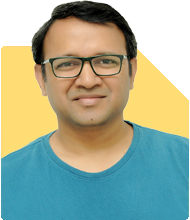Ramalingam Kalirajan |10240 Answers |Ask -Follow
Mutual Funds, Financial Planning Expert - Answered on May 08, 2024
He has an MBA in finance from the University of Madras and is a certified financial planner.
He is the director and chief financial planner at Holistic Investment, a Chennai-based firm that offers financial planning and wealth management advice.... more

Hello I am of 43 and I have started in SIP of 35K per month. I want to continue till next 17 years and planning to increase this SIP by adding Rs 5000 to basic Rs 35K every year from now. My 5000 SIP is in Quant small fund and 30000 is in customized plan of MF. What would be the estimate corpus at the end of 60 years?
To estimate the corpus at the end of 60 years, we'll need to consider factors such as the rate of return on your investments, the annual increase in SIP contributions, and the compounding effect over time. While I won't provide specific calculations, I can offer some insights into how your investments may grow:
Rate of Return: The rate of return on your investments plays a significant role in determining the final corpus. Historically, equity mutual funds have delivered average annual returns of around 12-15% over the long term. However, past performance is not indicative of future results, so it's essential to consider a conservative estimate.
Annual Increase in SIP: By adding Rs 5,000 to your SIP every year, you're increasing your investment amount and harnessing the power of compounding. This incremental increase can significantly boost your corpus over time.
Investment Allocation: Your SIPs are divided between Quant Small Fund and a customized plan of mutual funds. The performance of these funds will also impact the final corpus. Ensure that your investment portfolio is well-diversified and aligned with your financial goals and risk tolerance.
By continuing your SIPs for the next 17 years and gradually increasing your contributions, you're leveraging the power of compounding to accumulate wealth over time. While it's challenging to provide an exact estimate without specific calculations, I encourage you to use online SIP calculators or consult with a Certified Financial Planner to get a more accurate projection based on your individual circumstances.
Remember, investing is a long-term journey, and staying disciplined and committed to your financial goals will ultimately lead to success. Keep up the excellent work, and don't hesitate to seek professional guidance if needed along the way.
You may like to see similar questions and answers below
Sanjeev Govila | Answer |Ask -Follow
Financial Planner - Answered on Feb 06, 2024
Ulhas Joshi | Answer |Ask -Follow
Mutual Fund Expert - Answered on Sep 06, 2023
Jinal Mehta |103 Answers |Ask -Follow
Financial Planner - Answered on Mar 05, 2024
Ramalingam Kalirajan |10240 Answers |Ask -Follow
Mutual Funds, Financial Planning Expert - Answered on Jul 02, 2024
Ramalingam Kalirajan |10240 Answers |Ask -Follow
Mutual Funds, Financial Planning Expert - Answered on Jul 15, 2024
Patrick Dsouza |1370 Answers |Ask -Follow
CAT, XAT, CMAT, CET Expert - Answered on Aug 14, 2025
Patrick Dsouza |1370 Answers |Ask -Follow
CAT, XAT, CMAT, CET Expert - Answered on Aug 13, 2025
Patrick Dsouza |1370 Answers |Ask -Follow
CAT, XAT, CMAT, CET Expert - Answered on Aug 13, 2025
Nayagam P P |10252 Answers |Ask -Follow
Career Counsellor - Answered on Aug 13, 2025
Nayagam P P |10252 Answers |Ask -Follow
Career Counsellor - Answered on Aug 13, 2025
Nayagam P P |10252 Answers |Ask -Follow
Career Counsellor - Answered on Aug 13, 2025
Nayagam P P |10252 Answers |Ask -Follow
Career Counsellor - Answered on Aug 13, 2025
Nayagam P P |10252 Answers |Ask -Follow
Career Counsellor - Answered on Aug 13, 2025
Nayagam P P |10252 Answers |Ask -Follow
Career Counsellor - Answered on Aug 13, 2025
Nayagam P P |10252 Answers |Ask -Follow
Career Counsellor - Answered on Aug 13, 2025























